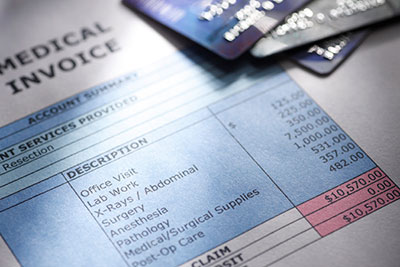-
Home
-
Improving Patient Payment Compliance in Orthopedic Practices
Improving Patient Payment Compliance in Orthopedic Practices
January 6, 2020

Though quality of care is the highest priority for your orthopedic practice, you need timely and adequate patient payment compliance to continue to provide that care.
As deductibles rise, unexpected bills crop up after traumatic events and out-of-pocket costs hinder patients’ ability to pay, financial instability can result.
Fortunately, patient education and up-front costs can help alleviate snags in patient payment and allow your practice the financial security it needs to continue to thrive.
What Obstacles Exist Between You and Getting Paid?
Orthopedic surgeons are more likely than any other medical specialty to have trouble collecting payment from both insurers and the patients themselves, with a 2019 Medical Group Management Association report asserting that at least 30% of practices found themselves in arrears for over 120 days and putting the median bad debt for orthopedic surgeons at nearly $50,0001.
Some of this is caused by the nature of orthopedic surgery, which is often a result of traumatic and unexpected injury that produces bills that are just as much a surprise. Add in rising deductibles and out-of-pocket costs, general confusion regarding billing and the tendency of patients to be far slower in paying bills than insurance companies or the government, and you likely have a breakdown in your ability to be paid on time.
What Practices Can Remove These Obstacles?
In your effort to increase your patients’ payment compliance, there is a multitude of beneficial strategies that can produce a more efficient process and lasting results2.
The road toward better compliance should begin with both understanding and education. It’s critical to keep in mind the financial pressure patients are placed under during the billing process, and simple education and information about that process can help patients understand what’s expected of them and allow them to budget in a way that aids them in getting you paid.
Here are some helpful best practices:
- Verify Patient Coverage: Before the patient’s initial visit, their insurance coverage should be checked to ensure your practice can effectively guide them through their financial obligation from the beginning.
- Educate Patients Regarding Billing: Provide access to as much information regarding billing as possible through strategies like the simplification of billing statements or introductory meetings for new patients.
- Consider Payment Agreements: Offering patient payment agreements that outline a clear schedule for payment can help patients stay on track.
- Keep a Card on File: Utilizing a secured and encrypted system to keep patients’ credit cards on file can allow you to better enforce payment schedules through automated billing either at the time of service or on a set schedule.
- Leverage Technology: Online patient portals with 24/7 access, online payments, automated email reminders, automation in insurance verification, cost-estimators and other technological improvements can help drive compliance forward.
At AliMed, we’re happy to leverage nearly 50 years of experience as your go-to source for resources and healthcare products that will help your practice improve patient outcomes and operate as efficiently as possible. To see how we can serve your orthopedic practice, head over to https://www.alimed.com/orthopedic-supplies-splints-braces/.
Resources:
- https://www.athenahealth.com/knowledge-hub/financial-performance/treating-broken-bones-without-racking-bad-debt
- https://www.exscribe.com/orthopedic-e-news/best-practices-improve-patient-payment-compliance-orthopaedic-practice